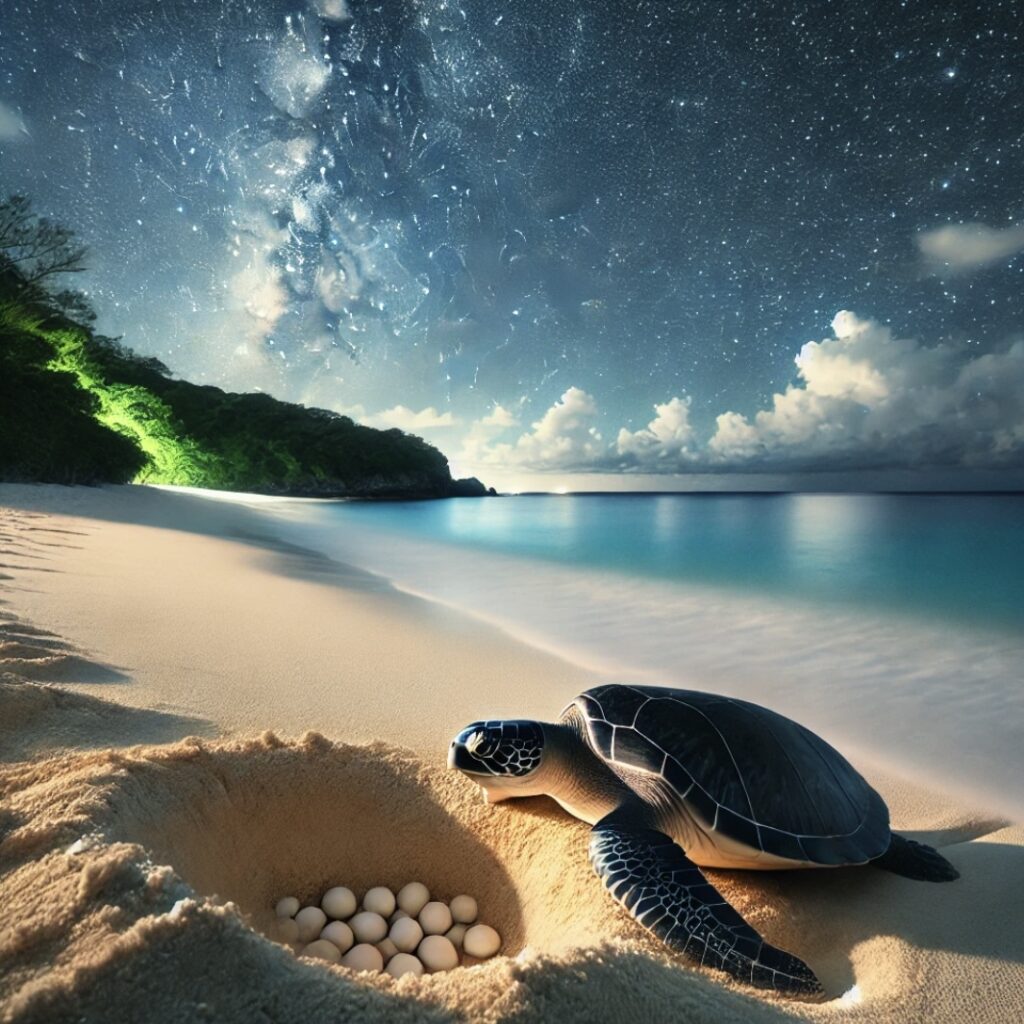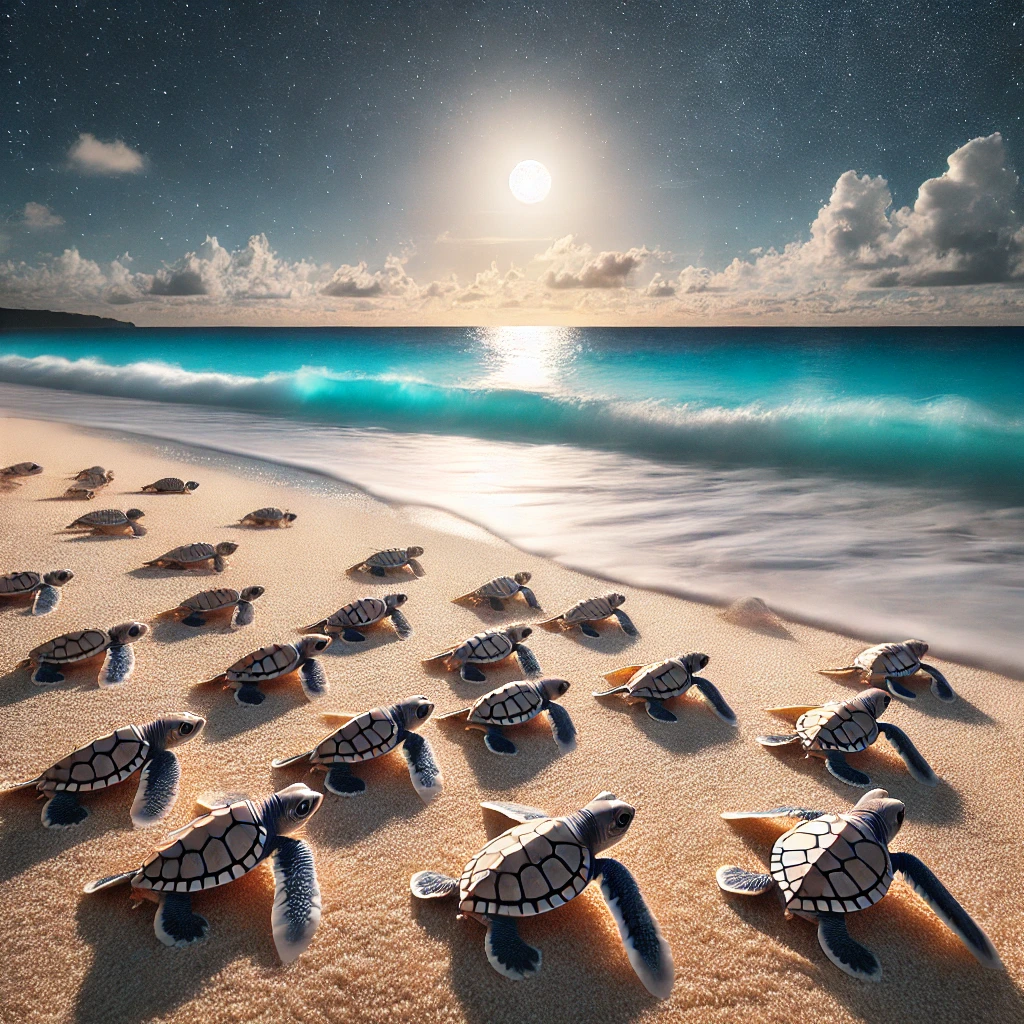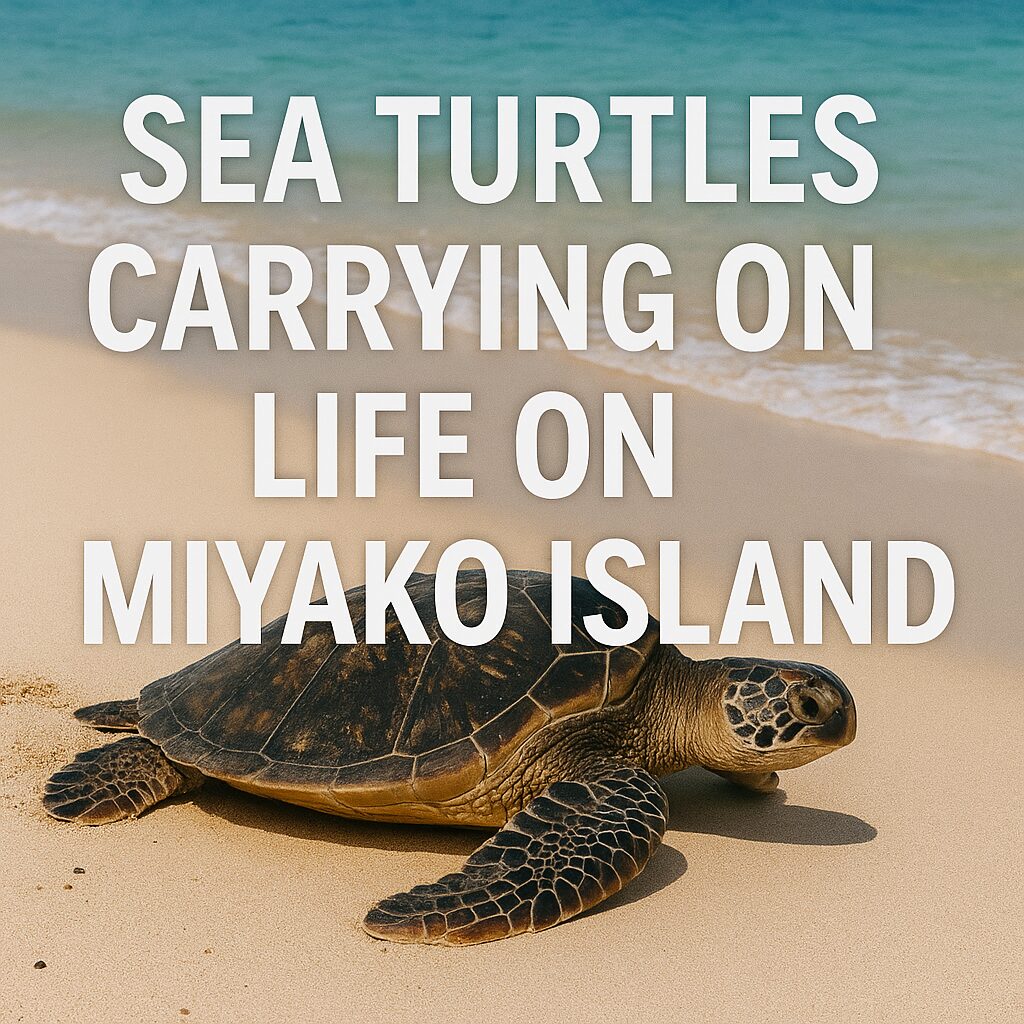The surrounding waters of Miyako Island are home to various species of sea turtles, including green turtles, loggerhead turtles, and hawksbill turtles, all thriving in its rich natural environment. These sea turtles are known to come ashore on the island’s beaches each year from spring to summer to lay their eggs. Among them, green turtles are the most commonly seen in the area and are often observed in shallow waters with coral reefs and seagrass beds.

Sea Turtle Nesting in Miyako Island
The nesting season for sea turtles mainly occurs from May to August. Female turtles come ashore at night to the quiet beaches of Miyako Island, where they use their hind flippers to dig a deep hole in the sand and lay around 100 to 150 eggs. After covering the eggs with sand to protect them, the turtles return to the sea. About two months later, the hatchlings emerge during the night and make their way to the ocean all at once.


Nesting Sites and Conservation Efforts
Popular nesting beaches on Miyako Island include locations like Yoshino Beach. While these spots are also popular tourist destinations, during nesting season, local organizations and volunteers work to protect the nesting sites. Efforts are made to prevent human intrusion and ensure that the eggs and hatchlings can grow safely.
Additionally, Kurima Island has declared itself “The Island of Coconut Crabs and Sea Turtles,” promoting active conservation efforts. At Musunun Beach, where signs of nesting had declined due to increasing tourism, sea turtle nesting has been observed again, and protection activities are being strengthened throughout the region.

The Importance of Conservation
Conservation efforts play a crucial role in maintaining the rich ecosystem of Miyako Island. Both local residents and tourists are asked to be mindful during nesting season, avoiding bright lights and loud noises that could disturb the turtles.
Miyako Island provides an ideal environment for sea turtles, and the entire community is working to ensure a safe space for them to nest. Visitors are also encouraged to act responsibly and contribute to preserving this beautiful natural environment.


